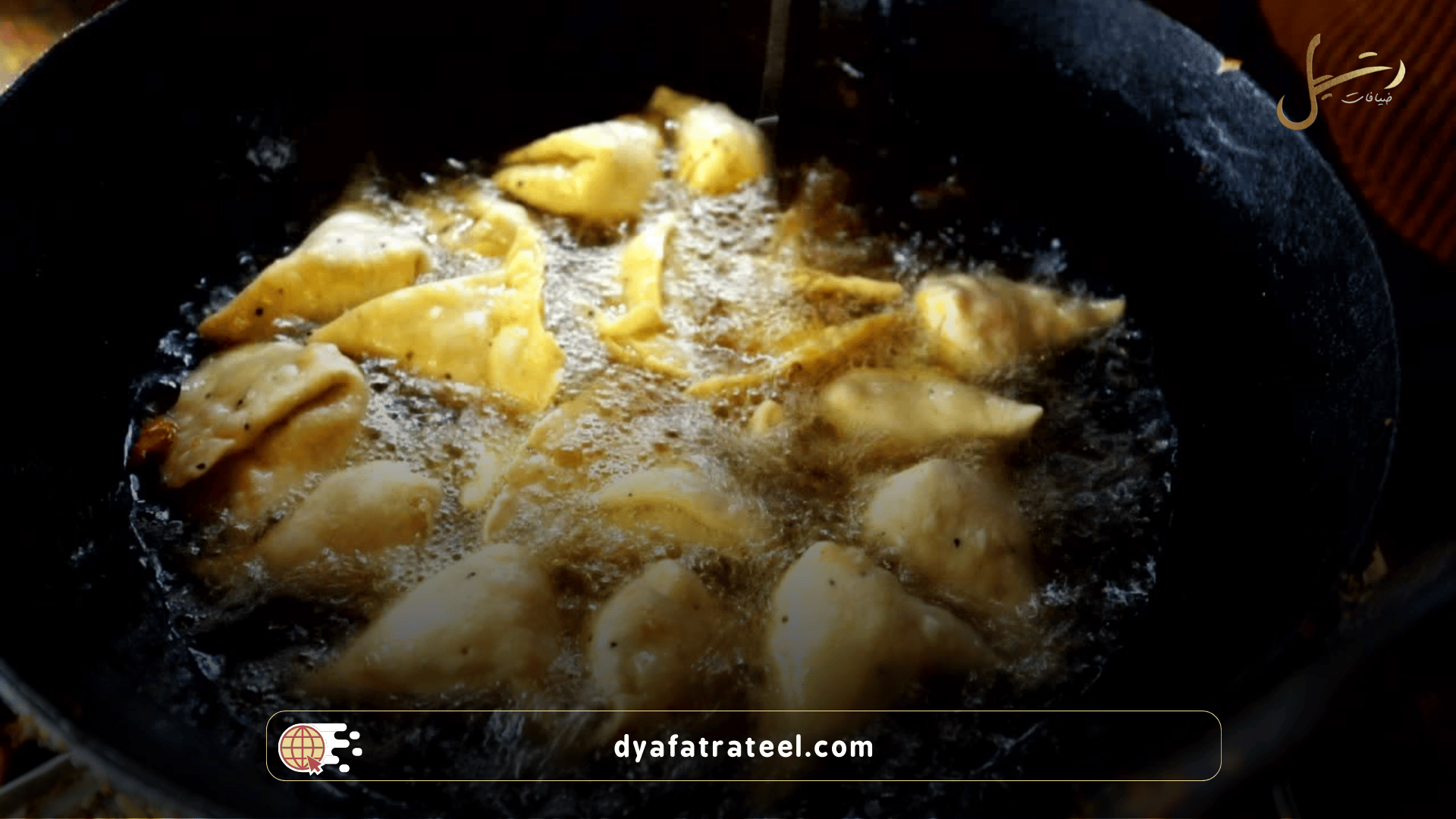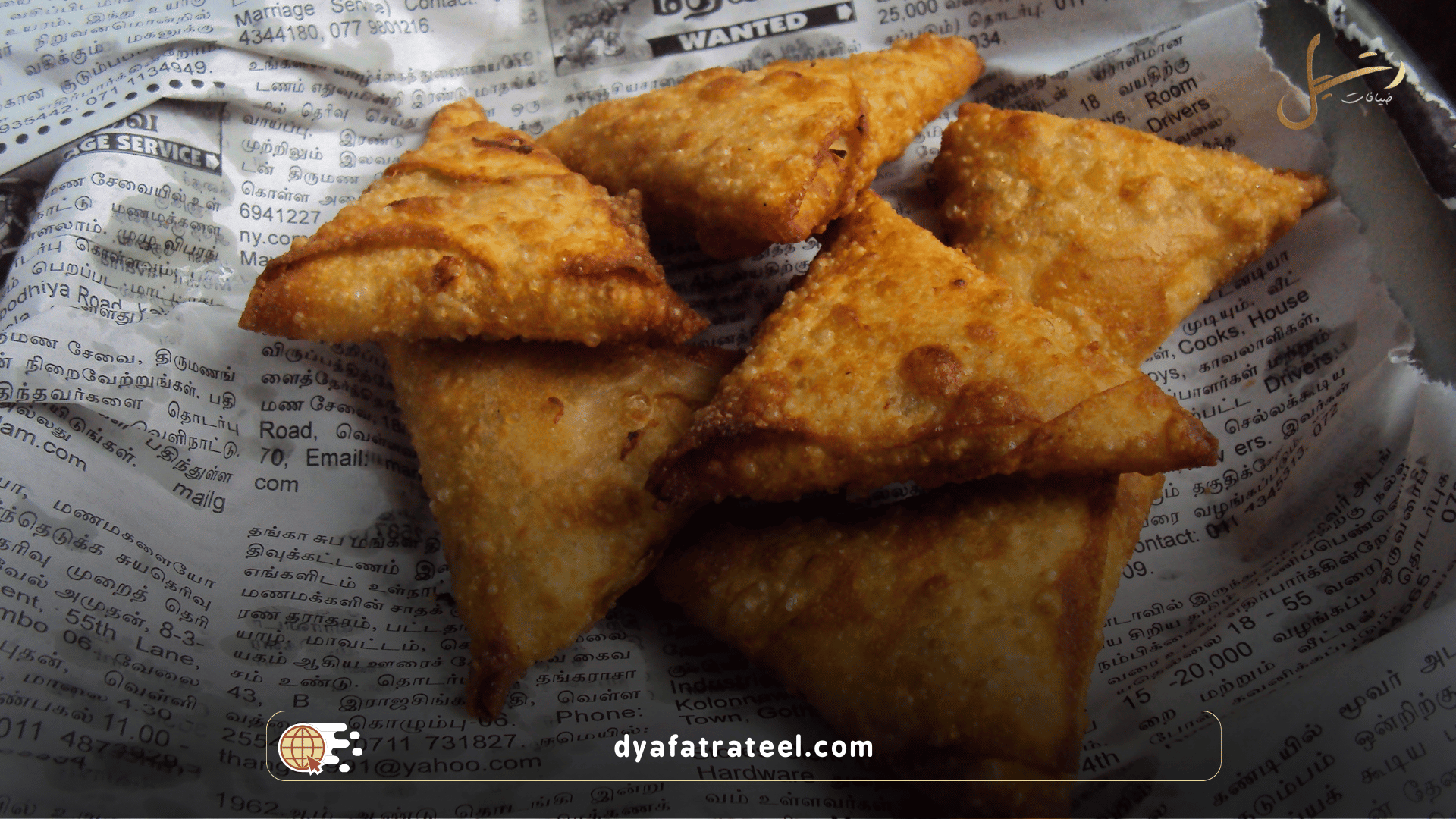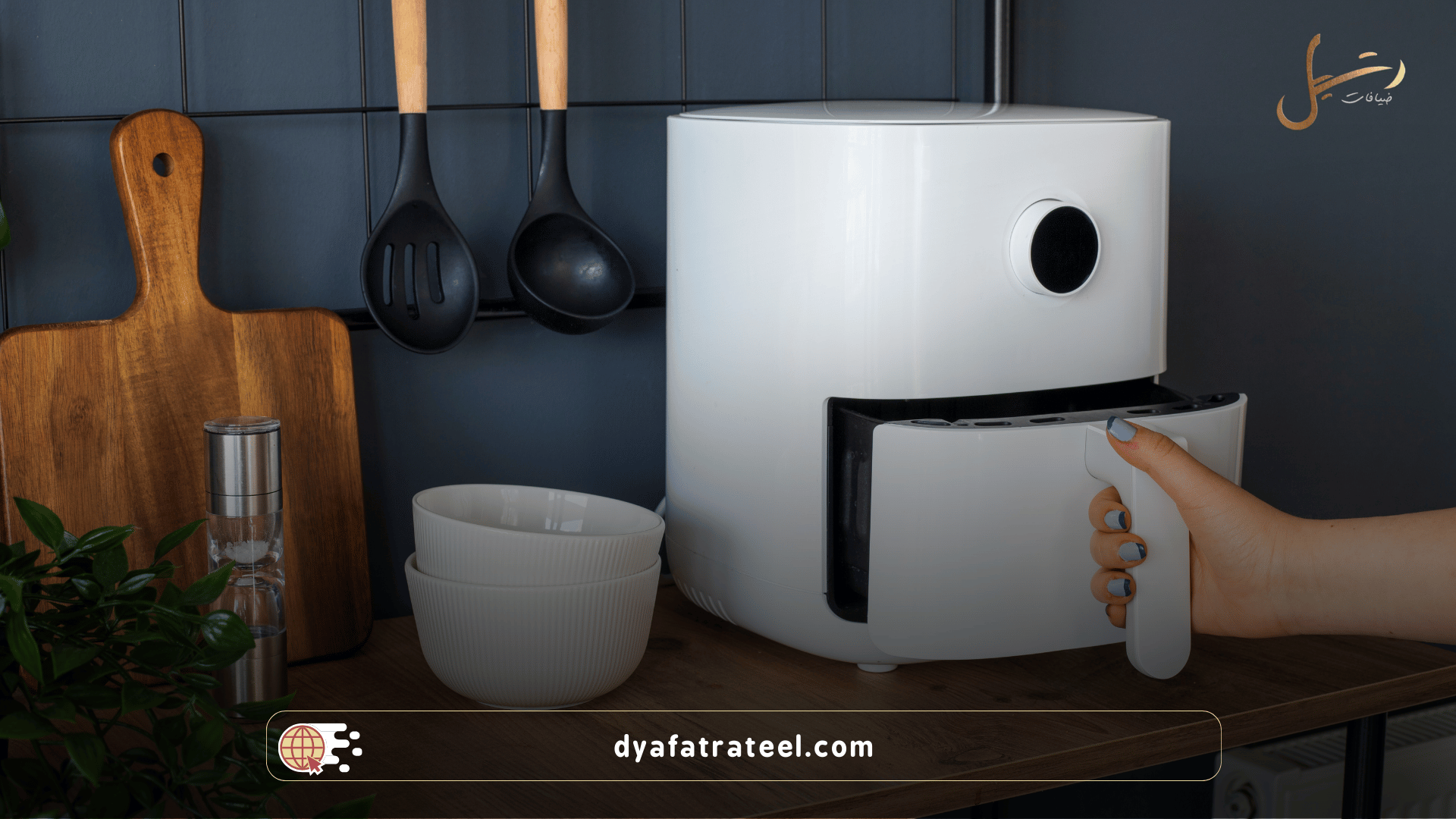Samosa is one of the most popular dishes in both Arab and international cuisine, often served on various occasions—especially during Ramadan. However, many people struggle with samosas absorbing too much oil during frying, making them greasy and heavy. Fortunately, there are simple techniques you can follow to ensure your samosas are crispy without being soaked in oil. In this article, we’ll explore the best tips for frying samosas in a healthier way while maintaining their crunch.
1. Use Dough of Proper Thickness
The thickness of the dough plays a major role in how much oil the samosa absorbs. Thick dough takes longer to cook and tends to absorb more oil, while overly thin dough may tear during frying.
Ideal Tips:
- Roll the dough to a medium thickness for strength and fry-resistance.
- Use high-quality flour for elasticity and easier handling.
- Roll the dough on a floured surface to avoid sticking and ensure evenness.
2. Freeze the Samosas Before Frying
Freezing the samosas for at least 30 minutes before frying helps reduce oil absorption. This firms up the outer layer and reduces moisture, preventing excessive oil absorption.
Benefits:
- Helps maintain structure during frying.
- Makes samosas less oily and crispier.
- Lets you prep large batches ahead of time.
3. Heat the Oil to the Right Temperature
If the oil is not hot enough (175–180°C), samosas will absorb more oil before forming a crust.

Tips to Check Oil Temperature:
- Use a cooking thermometer to maintain 175–180°C.
- If you don’t have one, drop a small dough piece into the oil; if it sizzles and rises immediately, it’s ready.
- Avoid overheating above 190°C, or the exterior will burn before the inside cooks.
4. Choose the Right Oil
Certain oils are better for deep frying. You need oils with high smoke points that don’t get absorbed easily.
Best Oils for Deep Frying:
- Corn oil – High heat tolerance and neutral flavor.
- Sunflower oil – Healthy and light on flavor.
- Peanut oil – Excellent for crispiness and high-temperature cooking.
Avoid:
- Olive oil – Low smoke point.
- Coconut oil – Strong flavor and low heat tolerance.
- Hydrogenated oils – Unhealthy due to trans fats.
5. Avoid Stirring Immediately After Frying
Moving samosas too soon can cause tearing and oil absorption. Let them set and form a crust first.
6. Drain Excess Oil with Paper Towels
After frying, place samosas on absorbent paper or a wire rack to prevent sogginess from retained oil.
Tips:

- Don’t stack samosas on top of each other right away.
- Use a wire rack to avoid steam build-up.
- Avoid covering them when hot.
7. Don’t Fry Too Many at Once
Frying in small batches helps keep oil temperature stable and reduces oil absorption.
Extra Tip:
Pre-fry samosas lightly, and reheat them quickly later in oil for better crunch without extra oil.
8. Fry in Stages
Frying in batches ensures consistent temperature and even cooking.
Tips:
- Keep already-fried batches warm in a low-heat oven while finishing the rest.
9. Avoid Reheating in Oil
Re-frying samosas makes them oily. Use alternative methods:
Best Reheating Methods:
- Oven: 180°C for 5–7 minutes.
- Air fryer: 170–180°C for 3–5 minutes.
- Nonstick pan: No oil, medium heat for a few minutes.
Avoid microwave – it softens the crust.
10. Try Air Frying
For a healthier version, air fry your samosas with a light spray of oil.
Steps:
- Preheat to 180°C.
- Lightly spray with oil.
- Cook 10–12 minutes, flipping halfway through.
Benefits:
- Up to 80% less fat.
- Maintains flavor and texture.
- Great for healthy eaters.

Final Thoughts
By following these tips—from choosing the right dough and oil to managing frying temperature—you’ll enjoy samosas that are crispy, delicious, and light. Apply these hacks to get perfect golden samosas every time!
FAQs
1. Why do samosas absorb too much oil?
Cold oil or thin dough leads to more oil absorption. Use medium-thickness dough and fry at 175–180°C.
2. How can I tell if the oil is hot enough?
Drop a small dough piece—if it sizzles and browns quickly, it’s ready. Or use a kitchen thermometer.
3. Can I fry samosas without oil?
Yes, in an air fryer or oven with minimal oil spray.
4. What’s the best oil for frying samosas?
Corn, sunflower, or peanut oil.
5. How do I keep samosas crispy after frying?
Use a wire rack instead of paper towels. Avoid stacking and store uncovered until they cool.




